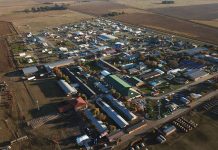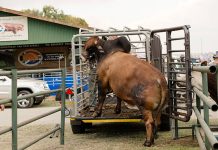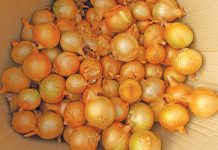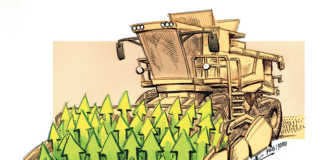Agriculture is a crucial sector and is one of the six job drivers identified in the New Growth Path. The job drivers are infrastructure development, agriculture, mining and beneficiation, manufacturing, the green economy and tourism. We are promoting growth in these sectors so that they can help us create much-needed jobs and eliminate poverty, unemployment and inequality.
The conference agenda indicates that you are correctly focusing on the role that can be played by farmers’ organisations and co-operatives in enhancing development and food security in our country and for our people. I have no doubt that delegates will be able to debate the issues and make concrete proposals that will ensure that our economy grows, that jobs are created and unemployment is reduced.
The conference takes place at a time when the international community, including South Africa, is faced with the threat of rising food prices. Our people are feeling the effect of the changing international economic climate. A basket of goods is much more expensive than a few years ago. The poor and the working class are adversely affected by this state of affairs. We are aware that in order to engage in agricultural production, even in this difficult period, farmers will need improved support.
They need financial support, market access, agro-processing and value adding, implements and inputs, as well as training and capacity development. These are the essential pillars for successful farmer development. As government, we are committed to playing our part in the provision of finance, the opening of new markets in our country and in other parts of the world, as well as the provision of implements and inputs.
In doing so, we are delivering on the mandate that is enshrined in the Freedom Charter and which directs government to provide tillers of the land with tractors, implements, seed and fertiliser that are necessary for farming.
Transforming the sector
While looking at the need to increase food production, we are also prioritising transformation in the agricultural sector. The current state of affairs within the agricultural sector in South Africa is one where commercial and smallholder agriculture co-exist, the one sector being predominantly white and the other sector being predominantly black. Commercial agriculture currently produces 90% of the agricultural output. It is estimated that it consists of about 37 000 members.
On the other hand, there are 25 million people who live in the rural areas and they produce 10% of the agricultural output
through subsistence farming. More support for emerging farmers will enable us to improve the participation of black people, in particular Africans, in commercial agriculture. Since 2009, a total of 11 000 new smallholders have been established out of a 50 000 target that we set for ourselves up to 2014.
Support has been provided to both new and long-established farmers through many programmes, including Letsema, the Recapitalisation and Development Programme and the funding agency, Mafisa. Despite the support, only a marginal number of 5 381 smallholders are involved in agribusinesses and a mere 3 910 are linked to markets.
To achieve further success, smallholder farmers require a comprehensive agribusiness support package, including favourable commodity pricing, access to finance, provision of technical expertise/mentorship, and contracted markets. Your inputs on how these services can be improved and fast-tracked will be most helpful as you engage government on an ongoing basis.
Land reform
We cannot talk about improving food security without referring to land reform. In 2009 we made a commitment to transfer 30% of the 82 million hectares of agricultural land which was white-owned in 1994 to black people by 2014. This 30% translates to 24,5 million hectares. Between 1994 and December 2011, 3,9 million hectares were redistributed through the land acquisition and redistribution programme. We have learned a number of lessons from the exercise.
A major lesson is that the process of acquiring and distributing a particular piece of land is often lengthy, and this escalates the cost of redistribution because the previous owner stops investing in the land. Many of the farms are therefore in a poor state of repair at the point of acquisition. In addition, there has often been a decline in productivity on the redistributed farms. This led to the adoption of a recapitalisation programme in November 2010. By December 2011, 595 farms were in the process of being rehabilitated through mainly rebuilding infrastructure.
Long-term
We are also already looking ahead as a country as to what our agriculture sector should look like in the next 30 years or so, through the National Development Plan produced by the National Planning Commission in the Presidency. The food security situation is too serious to leave to short-term planning only. Our long-term vision document, the National Development Plan, forecasts that by 2030 more than 70% of South Africa’s population will live in urban areas, compared with just over 60% today.
Even with these changes, rural areas will remain home to millions of our people. We know this because there is also considerable movement within rural areas, resulting in a consolidation into denser settlements. The need to access government and economic services such as schools, health facilities, water and electricity, and financial services has driven these changes.
All of this suggests to us that contrary to what some may believe, we need to plan how we use our most important natural resource, which is land. The NDP argues that agriculture is the primary economic activity in rural areas and has the potential to create close to 1 million new jobs by 2030. This can be done by expanding irrigated agriculture. There is evidence that the current 1,5 million hectares under irrigation can be expanded by at least 500 000ha through more efficient use of existing water resources and the development of new water schemes.
The plan also says that we can bring under-used land in the communal areas and land reform projects into commercial production, and that we need to develop strategies to support new farmers in collaboration with markets. To make the most of the opportunities that exist, we need to expand our water resources and irrigation infrastructure. We also need to invest in market linkages such as road and rail infrastructure, cold chain facilities and market information systems.
New land reform proposal
It is critical that we find ways of providing tenure security for communal farmers and investigate better ways of financing land reform so that new farmers do not become saddled with debt. The plan proposes a district-based approach to land reform and its financing. It proposes that each district should establish a district land reform committee where all stakeholders are involved.
This committee will be responsible for identifying 20% of the commercial agricultural land in the district and giving commercial farmers the option of assisting its transfer to black farmers. The implementation of this land reform proposal would include the following steps:
- Identifying land readily available from land already in the market, land where the farmer is under severe financial pressure, land held by an absentee landlord willing to exit, and land in a deceased estate. In this way, land can be found without distorting markets.
- After being identified, the land would be bought by the state at 50% of market value (which is closer to its fair productive value). The shortfall of the current owner will be made up by cash or in-kind contributions from the commercial farmers in the district who volunteer to participate.
- In exchange, commercial farmers will be protected from losing their land and gain black economic empowerment status. This should remove the uncertainty and mistrust that surrounds land reform and the related loss of investor confidence.
- A stepped-up programme of financing should be created. This would include the involvement of the
National Treasury and Land Bank, as well as established white farmers. The model envisages that the cost of land reform be spread between all stakeholders. It also envisages new financial instruments being designed for the purpose of facilitating land reform. These could include 40-year mortgages at preferential rates for new entrants into the markets, as well as land bonds that white farmers and others could invest in. This is an innovative proposal that needs to be tested. It would be useful to hear from you as members of the farming sector if you would support such an approach.
Research
Finally, we need to increase our investment in agricultural research and development. We also need to use the investment more strategically. The growing challenge of climate change means that we need to look at ways of making agriculture more sustainable even as we increase its productivity. This includes paying greater attention to alternative energy, soil quality, minimum tillage, and other forms of conservation farming.
We look forward to ongoing engagement with you as government, so that we can develop and harness our vision for agriculture and food security together. We would be keen to obtain resolutions of your conference as we want to know your thinking on these transformation and development issues.
The views expressed in our weekly opinion piece do not necessarily reflect those of Farmer’s Weekly.













